
Tribal Druid & Native
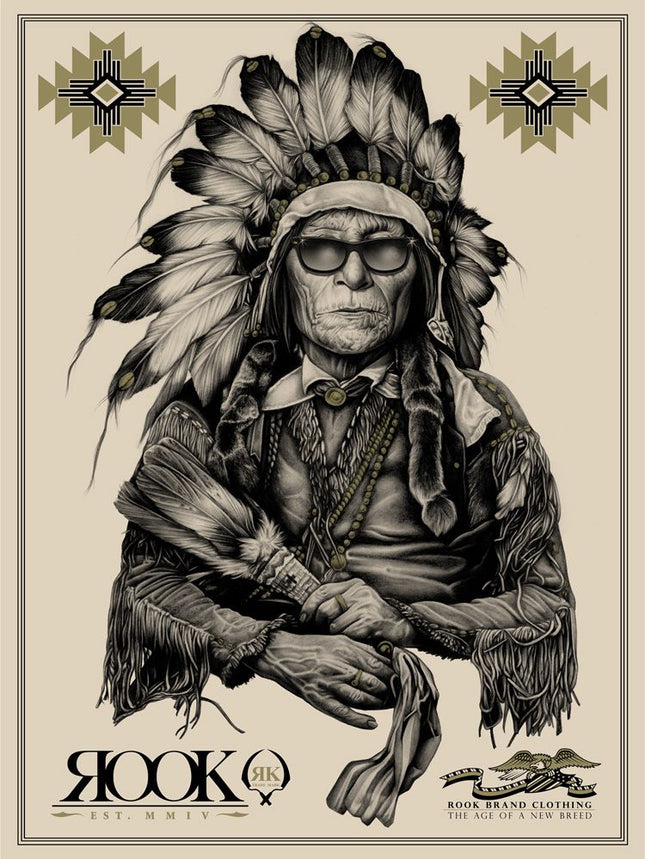
Joe King New Breed Chief AP Silkscreen Print by Joe King
New Breed Chief- Rook Brand Limited Edition 2-Color Hand-Pulled Silkscreen Print on French Speckletone Kraft Paper by Joe King Graffiti Street Artist Modern Pop Art. AP Artist Proof
$136.00
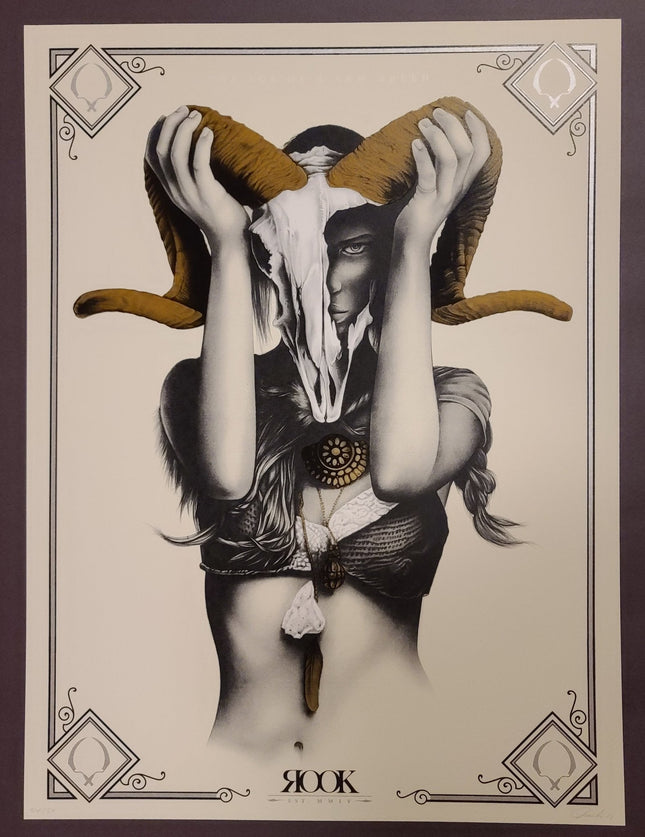
Joe King Mayra Skull Silkscreen Print by Joe King
Mayra Skull- Rook Brand Limited Edition 4-Color Hand-Pulled Metallic Ink Silkscreen Print on French Speckletone Kraft Paper by Joe King Graffiti Street Artist Modern Pop Art.
$140.00
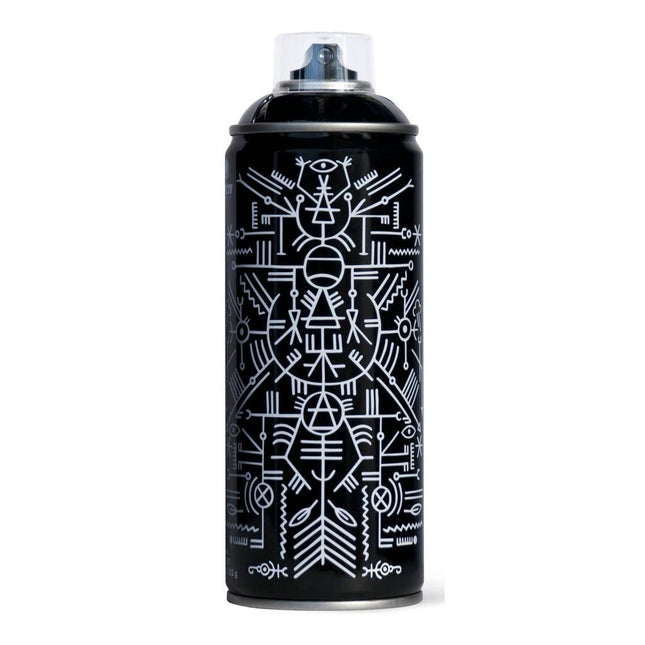
Grems Grems Black Spray Paint Can Artwork by Montana MTN
Grems- Black Limited Edition Rare Spray Paint Can Artwork Crossover by famous graffiti paint maker Montana MTN. The complete artist with overflowing energy, Grems is this kind of unstoppable artist, that will always push the boundaries til the end. His 2 main creative tendencies, Art and Music, developed alongside one another, are teasing and forcing each other to more energetic production in order to always create something unexpected while keeping his well-known and unique style. Hugely active and super productive, his unbridled creativity has made his CV read more like War and Peace: 6 solo albums, 8 releases in collaboration with Klub sandwich, Disiz, Rouges à Lèvre, Olympe, PMPDJ, Foreign Beggars, 15 music videos, multiple art exhibitions spanning the globe, including Peking, Perth, Sevilla, Mexico, London, Paris, Marseille, etc., many walls covered by his graffs including Southbank Centre in London, Beaubourg/ Museum of Pompidou, (the most prestigious modern art museum in France), collaborations with brands such as Skullcandy, Nike, Swatch, Asics, Converse, Scott and Sixpack to name just a few. Grems has also somehow managed to find time to create Ussle, his own apparel brand.
$242.00
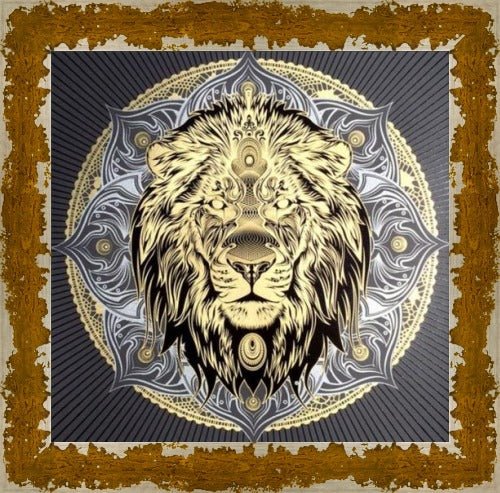
Chris Saunders Lion Mandala Silkscreen Print by Chris Saunders
Lion Mandala Limited Edition 2-Color Hand-Pulled Silkscreen Print with Spot UV Layer on 130lb French Black Licorice Paper by Chris Saunders Graffiti Street Artist Modern Pop Art. 2015 Signed & Numbered Limited Edition of 100 Artwork Size 24x24 Custom Framed in Distressed Gold Frame. "This piece was born from the inspiration of a personal struggle I was experiencing with overcoming certain obstacles in my life surrounding addiction. Not just chemical addiction, but addictive thoughts and behaviors that didn't serve my highest good. The lion archetype visited me in my dreams during this time of struggle with addiction. I dreamt I was a lion running with full force through a dense jungle. I had a thick rope in my mouth and as I ran through this jungle people were fighting to grab the free sides of the rope to try and slow me down from running so fast. It was getting snagged and I felt extreme pain in my body. The pain grew to the point my body caught on fire, I could feel my flesh searing. I remember fighting through it and eventually, the pain went away and I kept running forward. Pretty Intense! So I combined my vision of the lion with the mandala to mirror a frequency of courage, strength, and power to its the viewer and the space that it is hung in." - Chris Saunders
$1,090.00$927.00
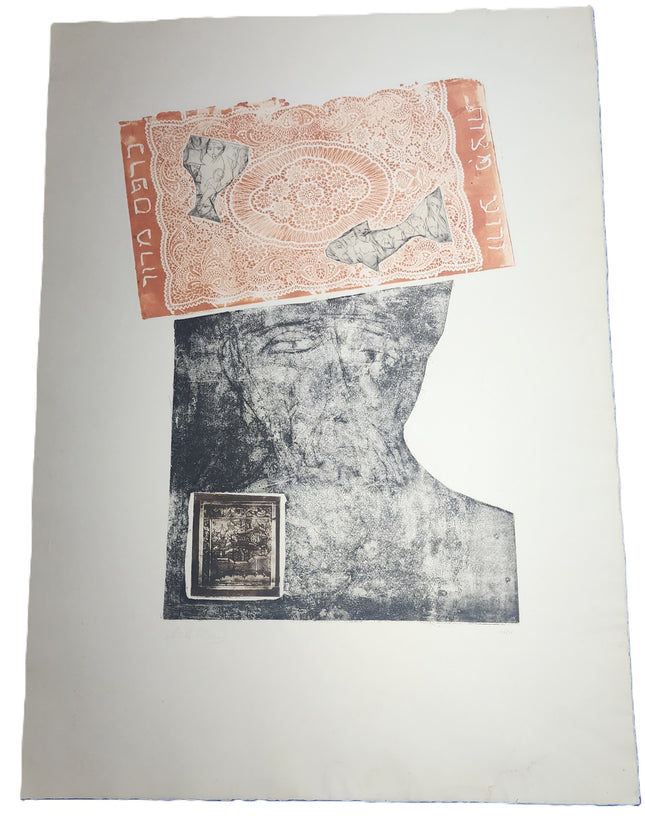
Zwy Milshtein Three-Piece Etching Aquatint Print by Zwy Milshtein
Three-Piece Etching Limited Edition Etching with Aquatint Print on Hand-Decorated Fine Art Paper by Zwy Milshtein is a pop art graffiti artist art. 1970 Signed & Numbered Limited Edition Etching Art Print. Artist: Zwy Milshtein Title: Three Piece Etching Medium: etching, with Aquatint Size: 21 x 30 inches Edition: Signed in pencil and marked 26/75 Zwy Milshtein: A Maestro of Etching and Aquatint Zwy Milshtein's artistic narrative is one of movement, not just across geographies but also through the evolution of his distinct style and technique. Born in 1934 in Kichinev, now known as Moldova, Milshtein's journey through the turbulence of World War II led him from Russia to Romania and eventually to Israel. However, in Paris, to which he moved in 1955, Milshtein found his enduring artistic home. Here, he became renowned as both a painter and a master engraver, celebrated for his etchings and engravings that capture the complexity of human experience. The Intertwining Paths of Engraving and Street Art The "Three-Piece Etching" by Milshtein is a testament to the craftsmanship and depth of engraving as an art form. Completed in 1970, this signed and numbered limited edition etching with aquatint, measuring 21 x 30 inches, is a fine example of Milshtein's adeptness with aquatint—a technique that allows for the creation of tonal effects, producing rich textures and a range of shades that lend a painterly quality to prints. This artwork, part of an exclusive series marked 26/75, is particularly notable for its abstract composition and the intriguing use of negative space, which engages the viewer in a visual dialogue reminiscent of contemporary street art and graffiti. Milshtein's Impact on Contemporary Art Milshtein's influence on the art world is well-documented through numerous exhibitions and retrospectives. His work was featured at ARC, the Museum of Modern Art in Paris, and in 1978, the Bibliotheque Nationale in Paris hosted a retrospective exhibition of his engravings. His artistic achievements include participation in the Hans Christian Andersen House project 1997, where he, along with other top European artists, paid tribute to the Danish author's bicentennial birthday. The aesthetic choices and technical skill displayed in works like "Three-Piece Etching" echo the visual strategies found in street pop art and graffiti. Milshtein's art, while distinct in its medium and execution, shares the spirit of innovation and subversion that is a hallmark of street art. His engravings invite the public to explore themes of identity, memory, and existence, much like street art and graffiti often do within the urban landscape. Zwy Milshtein's contributions to the world of engraving and his explorations in aquatint have secured his reputation as an artist of great skill and depth. "Three-Piece Etching" is a prime example of his ability to communicate complex ideas through printmaking. His legacy continues to inspire and influence artists within and beyond pop art, street art, and graffiti, affirming his artistry's enduring power and relevance.
$350.00






